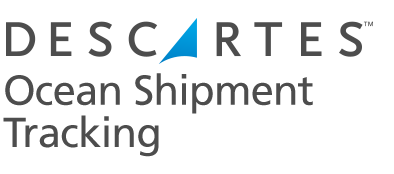Mastering Ocean Freight Tracking
In the world of ocean freight, where 80% of the global goods are transported, shipping companies encounter common challenges in managing their international inbound supply chain operations. Coordinating container shipments and ocean shipment tracking across various supply chain partners operating on different systems based on time-sensitive deliveries can be daunting.
However, the key to overcoming these challenges lies in gaining full-scale visibility into the live-location and status of ocean shipments, enabling precise predictive estimated times of arrival (ETAs) that enhance planning.
This article explores the pivotal role of ocean shipment tracking, with a specific focus on its coordination with receiving and transfer operations. It also highlights the essential capabilities of technology solutions that empower shippers, third-party logistics providers (3PLs), forwarders, and brokers to achieve comprehensive ocean visibility and track container shipments, thereby streamlining extended supply chains for all stakeholders.
Ocean Shipment Tracking as a Visibility Solution. What Is It?
The vast and unpredictable nature of the open seas and ports has historically posed challenges in ensuring timely and secure deliveries. This is where ocean visibility and container tracking step in, offering a cutting-edge solution to monitor the whereabouts of cargo vessels and containers as they traverse the world's oceans.
At its core, ocean shipment tracking leverages a combination of advanced technologies, including GPS, satellite communication, and data analytics, to provide real-time visibility into the status of maritime shipments.
With this technology in place, stakeholders can access crucial information such as the vessel's current location, estimated time of arrival, and even monitor environmental conditions that might affect the cargo.
This level of transparency and control empowers businesses to streamline their supply chains, minimize risks, and enhance customer satisfaction by ensuring that goods arrive at their destination on schedule. In the age of globalized trade, this visibility is undeniably a game-changing solution that brings efficiency and reliability to maritime logistics.
The Crucial Role of Ocean Shipment Tracking
In the wake of ocean shipping volume increases over recent decades, it's puzzling to note that a significant number of companies continue to cling to manual means of obtaining insights into their ocean shipment's whereabouts and status. This isn't necessarily because they aren't eager to modernize their approach.
However, with several involved parties, each employing different procedures and systems, attaining a unified and transparent view of a container's transit/status remains a daunting task. Today, thanks to collaborative tools paired with innovative data sources for tracking both in-transit and at-terminal shipments, as well as the leveraging of Machine Learning for precise ETA predictions, ocean shipment tracking has never been more streamlined.
Here's what enhanced visibility in ocean shipment tracking offers:
Informed decision-making in real time
Dive into the realm of ocean shipment tracking and discover real-time data on your shipment's position, condition, and projected arrival time. With these insights, businesses, supply chain collaborators, and clients can make enlightened decisions, optimizing resource distribution and inventory oversight effectively.
Anticipate and resolve issues promptly
The unpredictable nature of the supply chain, exemplified by situations like the Panama Canal bottleneck, means disruptions constantly threaten ocean shipments. But with visibility and a manage-by-exception approach, potential setbacks can be spotted and tackled ahead of time, ensuring minimal interference to your operations or those of your clients.
Boosted customer sentiment
Offering customers a singular platform with all their data for timely updates and ETA forecasts, whether through an accessible online portal, automated emails, or existing client-oriented systems, can significantly elevate their satisfaction. By sidelining manual processes, ocean shipment tracking diminishes wait times and fosters better client relationships.
What are the Benefits of Ocean Shipment Tracking?
As the global marketplace continues to expand, the importance of efficient and reliable ocean shipment processes and visibility cannot be underestimated.
The key to this efficiency is the ability to track containers during ocean voyage. This solution offers benefits that enhance supply chain management, optimize logistics, and enhances customer trust. Here's a comprehensive look at the advantages of this crucial capability:
- Visibility: Allows companies to have real-time insights into where their shipments are at any given moment.
- Improved Decision Making: With accurate data on shipment location and progress, businesses can make informed decisions related to supply chain management.
- Reduced Delays: Early detection of potential issues or disruptions enables quick action, reducing the risk of significant delays.
- Cost Savings: Visibility into container locations and statuses can help minimize expenses related to lost or delayed shipments. It can also result in more efficient inventory management and reduce storage costs.
- Enhanced Customer Service: Companies can provide customers with accurate delivery estimates and real-time updates, leading to improved customer satisfaction.
- Risk Management: Helps in monitoring shipments through high-risk areas, including regions with piracy or political instability, as well as timely insurance claims in case of lost or damaged goods.
- Greater Efficiency: Real-time data can assist in optimizing routing and making adjustments based on current conditions.
- Condition Monitoring: Some advanced tracking systems provide environmental data like temperature, which is crucial for perishable or sensitive goods.
- Accountability: Helps in holding carriers accountable for delays, losses, or damages.
- Improved Documentation: Digital tracking can simplify documentation processes, ensuring that all necessary paperwork is available and accurate.
- Forecasting: The data from tracking can aid in identifying trends and patterns, helping businesses plan for future shipments.
- Reduction in Theft and Loss: Tracking can act as a deterrent to theft, and in the event of a loss, can help in locating and recovering goods more swiftly.
Transportation Management System vs Ocean Tracking Solution
While a transportation management system (TMS) is capable, a full-fledged ocean visibility platform is essential for synchronizing with numerous supply chain partners. This integration of crucial data is a different ballgame and proves that ocean visibility is far superior to a TMS.
It's essential to have a tool that seamlessly connects to your supply chain partners, automates updates, and is user friendly. Remember, not all systems are created equal. Some may excel in tracking inbound shipments, while others are tailored for outbound operations.
Balancing these flows, especially when juggling different loading/unloading operations, demands precise coordination.
Moreover, you need ocean shipment tracking and port visibility that integrates seamlessly with your existing TMS and warehouse management system (WMS). While some businesses might find their TMS or WMS vendor's visibility solutions adequate, it's imperative to thoroughly understand your operational requirements to select the optimal solution. Just because your TMS or WMS vendor offers a certain technology doesn't guarantee it's the best fit for your business needs.
What Comes After Ocean Visibility? Streamlined Planning
Once you have achieved full visibility into your ocean freight operations, the next step is to streamline the planning process to ensure efficiency and effectiveness within the supply chain. Here’s how shippers can do it:
1. Customs Clearance Data for Efficient Pick Ups: Leveraging customs clearance data ensures that your goods are ready to be picked up the moment they are cleared. This eliminates any potential delays caused by waiting for customs clearance after the goods have arrived at the port, leading to a more efficient pick-up process and better utilization of resources.
2. Continued Visibility into Truckload, LTL, Intermodal, and Rail: Extending visibility beyond ocean transport into truckload, LTL, intermodal, and rail operations provides a 360 degree view of your supply chain. This allows for better coordination and optimization of these different transportation modes, ensuring that goods are moved efficiently from the port to their final destination.
3. Condition Monitoring (Temperature): For perishable goods or items that require strict temperature control, implementing condition monitoring ensures product integrity throughout the supply chain. Real-time temperature monitoring allows for immediate action in case of any deviations, ensuring that goods arrive at their destination in optimal condition.
4. Dynamic Appointment Scheduling: Utilizing dynamic appointment scheduling tools helps in aligning warehouse, store, and distribution center operations with real-time ETAs. This ensures that resources are optimally allocated, reducing waiting times and improving overall operational efficiency.
By integrating these practices into your supply chain, you can build on the visibility gained from ocean freight operations and create a streamlined, efficient planning process that drives value across the entire supply chain.
Descartes MacroPoint™: Ocean Shipment Tracking & Appointment Scheduling
Descartes MacroPoint Ocean Visibility stands on the pinnacle of modern technology, merging the strengths of Descartes MacroPoint with the Descartes Global Logistics Network™ (Descartes GLN™).
This integration promises unparalleled insights for businesses handling container shipments. The data seamlessly integrates with Descartes' TMS platforms, Dock Appointment Scheduling, and other third-party platforms using diverse data transfer protocols.
However, simply interconnecting systems doesn't cut it.
That's why Descartes has accumulated a vast dataset encompassing 80+ carriers, 400+ forwarders, 500+ ports/terminals, leading co-loaders, and U.S. Customs and Border Protection. This wealth of information facilitates accurate predictive ETAs, allowing businesses to manage by exception and make informed decisions.
- Operationally, this means real-time insights into the location and status of your ocean containers, empowering you to preemptively address shipment risks.
- Accurate ETAs, coupled with a transparent platform that connects all supply chain partners, provide a deep dive into proactive dock scheduling. This system empowers carriers, suppliers, and facility personnel to coordinate and confirm dock appointments, ensuring everyone is on the same page.
- Furthermore, it uses the data to optimize scheduling based on priority, available resources, and equipment. Such extensive data also pinpoints areas of inefficiency, allowing businesses to enhance overall operations.
- Comprehensive reporting and dashboards foster an environment of continuous improvement, highlighting the benefits of a cohesive ocean shipment tracking and appointment scheduling system.
To sum it up, for businesses aiming to streamline their inbound processes, comprehensive visibility into ocean shipments and efficient dock appointment scheduling is non-negotiable. With Descartes’ team and expertise, businesses are equipped with the tools they need to navigate the intricate waters of the modern supply chain, ensuring smooth sailing in all operations.
Ready for unmatched ocean shipment tracking? Speak with our team today.
Recommended For You
GPM offers routing, rating, margins, capacity and schedule information in order to provide comprehensive pricing and service recommendations. The solution is combined with a digital customer booking experience to capture market share and improve profitability. Learn more how GPM can help your organization.
B Descartes Rate Builder Price Management is a software-as-a-service (SaaS) solution that helps NVOCCs and their freight forwarder customers quickly and efficiently manage carrier buy-rates and surcharges. This web-based solution provides global buy-rate visibility, securely and safely within their organization.
Our Solutions




